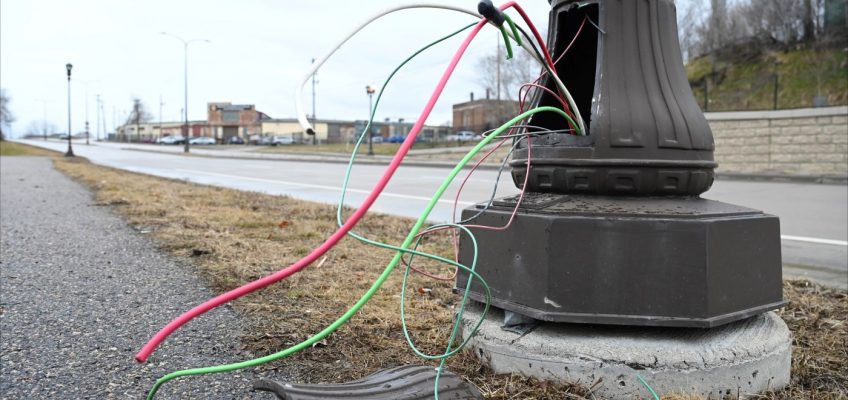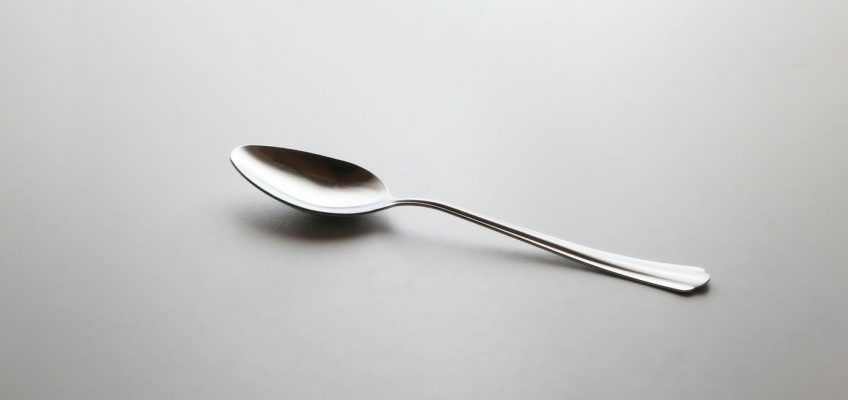The last of a trio who stole copper wire from Cottage Grove streetlights last year has been sentenced to probation, as the two others were before her.
Paw Hkee La, 22, of St. Paul, received the sentence Wednesday in Washington County District Court after she previously pleaded guilty to aiding and abetting felony first-degree criminal damage to property.
As part of a December plea agreement, her conviction will become a misdemeanor if she follows conditions of three years of supervised probation. Two other charges were dismissed in the case: aiding and abetting felony possession of burglary or theft tools and aiding and abetting misdemeanor theft. A second case charging her with felony possession of methamphetamine was also dismissed.
Paw Hkee La (Courtesy of the Washington County Sheriff’s Office)
Judge Siv Mjanger ordered Paw La to pay a third of the $5,720 in restitution to the city of Cottage Grove for the damaged streetlights, along with her two accomplices Tha Dah Htoo and Dei Gay Moo, both 25 and of St. Paul.
Paw La has an open streetlight copper wire theft case that she picked up in Ramsey County while out on bond. It alleges she was part of an organized crew that stole wire from streetlights for copper and then sold it to recycling facilities. After she was charged in the case in April, she was transferred from the Ramsey County jail to the Washington County jail, where correctional officers found meth in her wallet while booking her.
Rash of wire theft from streetlights
Cottage Grove is among the cities that has seen a rash of theft of copper wire from streetlights in recent years.
The problem has skyrocketed in St. Paul, especially. Restoring lighting from wire theft cost the city $2 million last year, according to St. Paul Public Works. That’s up from $1.2 million in 2023, $453,172 in 2022, $294,494 in 2021 and $104,595 in 2020.
“Working with our partners in the St. Paul Police Department, we have seen successes with some of the creative strategies to prevent wire theft, as well as the use of our high access street lights,” said Lisa Hiebert, Public Works spokesperson.
In Minneapolis, officials said the city has spent $545,000 replacing stolen copper wire over the past two years.
Thefts caught on camera
Cottage Grove police set up covert video cameras in spots thieves might target. The effort paid off as one spot — a mostly industrial area along 100th Street and west of U.S. 61 — was too tempting for Paw La and her accomplices the night of Jan. 18, 2024, police say.
Officers monitoring the cameras from squad cars saw the thievery go down around 8:50 p.m., swooped in and arrested the trio.
Video cameras showed a car driving back and forth near Ideal Avenue and 100th Street. It eventually stopped, three people got out and pulled wire from the base of a streetlight, the criminal complaint says.
They got back into the car, drove to another streetlight and pulled wire from it. Officers converged on the area and arrested them.
A search of the car turned up spooled wire with wrap labeled, “City of Saint Paul,” the complaint says. Pliers, a wire cutter and screwdriver were also in the car.
In July, Judge Mjanger sentenced Tha Htoo to three years of supervised probation as part of the county’s diversion program, which allows first-time offenders to avoid convictions by successfully completing the conditions of probation.
Mjanger gave Dei Moo a downward departure from state sentencing guidelines in November. A two-year prison sentence was stayed and he was put on probation for five years. He had served 63 days in jail. Mjanger noted in a departure report that he is “particularly amenable” to probation and chemical dependency treatment.
Court records show Dei Moo has several prior criminal convictions, including two for cutting catalytic converters off vehicles. Since 2020, he’s been convicted of motor vehicle theft three times and threats of violence and fleeing a police in a motor vehicle once.
Statewide requirements to help prevent copper wire theft became law on Jan. 1, despite an ongoing lawsuit by scrap metal workers claiming the legislation will effectively shut down their industry.
“We continue to be optimistic that the new copper wire legislation will impact the markets of thieves profiting on selling stolen copper, but it’s still too early” to measure, Hiebert said.
Related Articles
Thieves nab pricey bulldogs from a Colorado pet store after faking a seizure, sheriff says
Judge criticizes Justice Department’s broad reading of Trump’s Capitol riot pardons
St. Paul driver gets a month in workhouse in hit-and-run that injured 2 pedestrians
Ex-Isanti police officer admits to sending lewd photo to friend’s daughter
Adnan Syed case: What Wednesday’s hearing means for the ‘Serial’ subject




